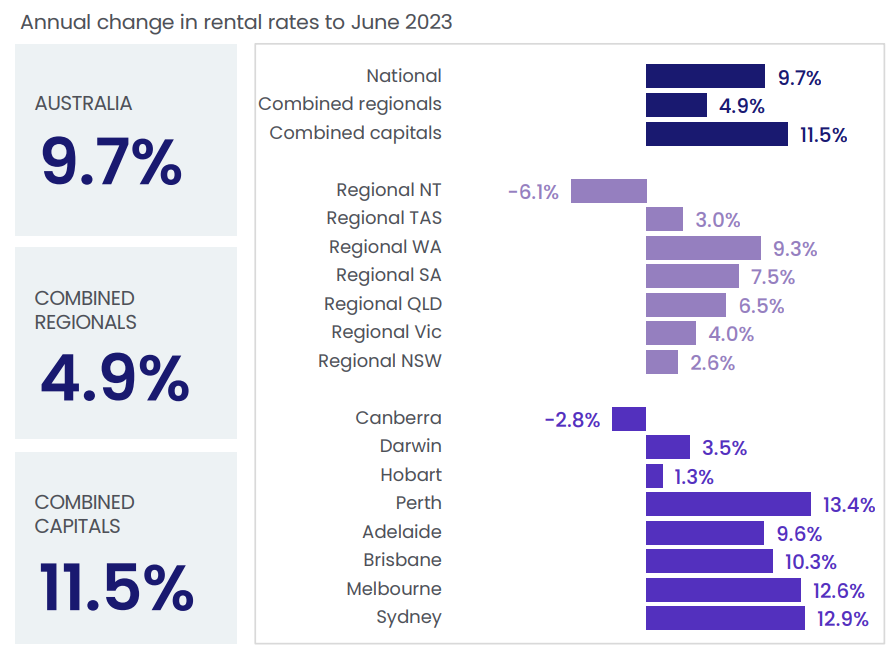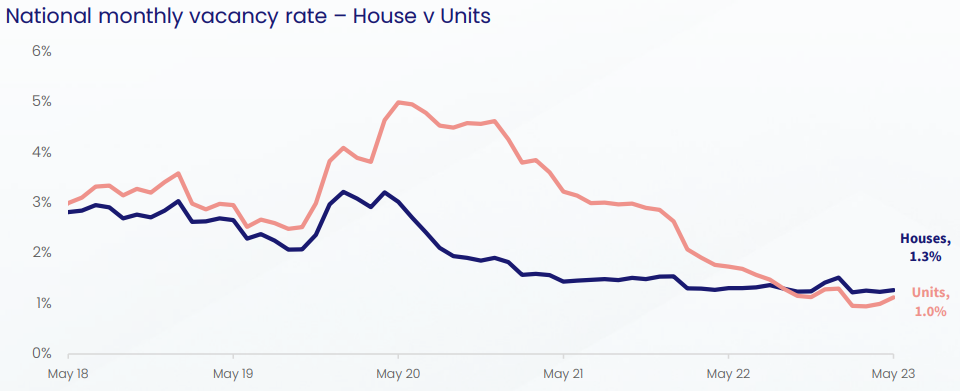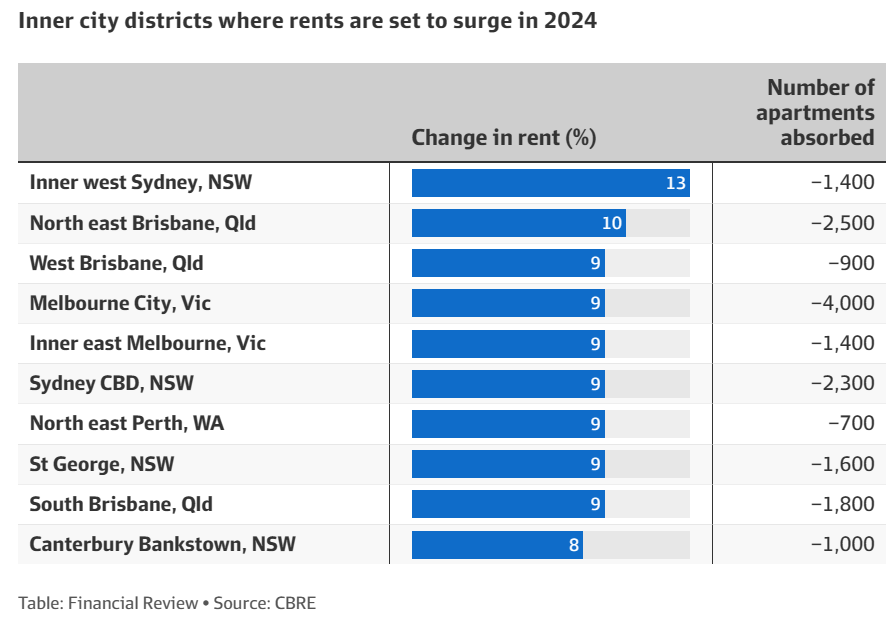Wednesday’s consumer price index (CPI) data from the Australian Bureau of Statistics (ABS) reported that capital city residential rents soared by 7.3% over the 2022-23 financial year:

Reserve Bank of Australia (RBA) Governor Phil Lowe told May’s Senate Estimates Committee that residential rental growth is anticipated to reach a three-decade high of 10%, as overall rents measured in the CPI catches up with double-digit growth in capital city asking rents:

Source: CoreLogic
The strong growth in Australian rents is being driven by Australia’s net overseas migration (NOM).
Australia’s population grew by a record 500,400 in the 2022 calendar year, driven by record NOM of 387,000:

This population boom has driven rental vacancy rates to near record lows, which is driving the hyperinflation in capital city rents:

Source: CoreLogic
The rental situation is destined to worsen, given the federal budget has projected that Australia’s population would swell by 2.18 million people in the five years to 2026-27, driven by record 1.5 million NOM.
Thus, Australia’s population is projected to increase by the equivalent of a Perth’s worth of people in only five years, with an Adelaide’s worth of people expected to arrive via NOM alone.
This population onslaught is occurring at the same time as actual housing construction rates are in free-fall:

Indeed, The AFR reported on Tuesday that a “significant mismatch between apartment supply and demand will help drive continued rental growth in key city centre areas, despite signs of easing in some rental markets”, according to Sameer Chopra, CBRE’s Pacific head of research.
CBRE forecasts that 570,000 apartments will be needed over the next three years across Australia’s capital cities, but only 55,000 apartments are currently being built each year.
Rental demand in Sydney is likely to rise by 34,100 units next year, driven by robust population growth, but there are only 15,300 apartments available, resulting in an 18,800 shortfall.
Melbourne’s rental market will be 23,800 apartments short, Brisbane’s by 12,100, Perth’s by 10,500, and Adelaide’s by 4100.
“In most precincts around Australia we’re expecting 0.2% to 0.5% apartment vacancy contraction in the next 12 months”, says Chopra.
“This comes at a time when 80% of precincts has a sub-1.5% vacancy and will be a key driver of future rental growth”.
Accordingly, rents will continue to grow at a swift pace, led by Sydney:

CoreLogic’s Research Director, Tim Lawless, warned that “demand for rental housing is likely to remain high as overseas migration, foreign students and domestic renters compete for scarce rental supply, and we are yet to see any material uplift in rental supply”.
However, because many tenants are reaching the top of what they can afford to pay in rents, many will resort to living in group housing.
“Affordability pressures could be a factor in forcing a change in household formation, as renters once again form larger group households in an effort to spread their rental costs across a larger number tenants”, Lawless said.
There is only one possible outcome from the Albanese Government’s reckless extreme immigration program: further rental market tightening and continued high rental inflation.
Given residential rents comprise 6% of Australia’s CPI basket, overall inflation will also be pushed higher (other things equal), forcing the RBA to respond with higher interest rates.
In turn, both renters and mortgage holders will suffer from Albo’s extreme immigration.

